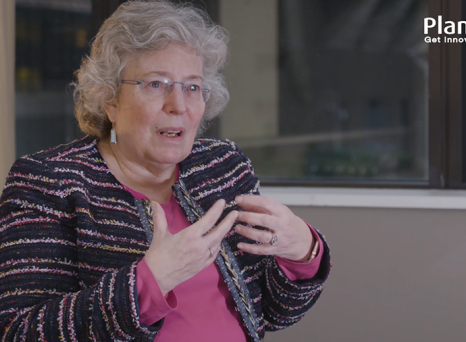While it’s reasonable to expect the PMO to show the impact of each project, they still face substantial challenges. PMOs often lack adequate resource management capabilities to standardize and prioritize projects. They’re squeezed for the time necessary to focus on strategic activities and may encounter fierce resistance to any changes to standards, practices, and processes they propose within the organization.
It’s no wonder 47% find it hard to help their project managers improve their priorities, nor that 42% of PMO don’t have enough project managers in the first place.
The PMO Role is Changing
The most mature PMO are seen by the C-level suite as a major source of benefit. How can the PMO express the value they provide to decision makers in the face of challenges and resource constraints in a constantly changing world? How can the PMO bridge the strategy and operations side of the business to transform itself from a cost center to a profit center?
PMO leaders need the right answers to the following operational and strategic questions.
- What activities are my resources working on?
- How much time is allocated to my resources? What is their availability?
- How can I measure the impact of a resource change on my project schedule?
- Why don’t my experts have time for key projects?
- Why do our projects fall behind schedule?
- How do cost and resource overruns impact projects and expected ROI?
- What is our real capacity to deliver?
- Do we really have the capacity to achieve our goals?
- Do we have the right resources in-house? Should we recruit?
There is controversy when it comes to resource management. From the operational side, a PMO is supposed to know what’s available in terms of skills. At the same time, the PMO is not overseeing resource allocations and may lack visibility on the current and upcoming schedule.
While the PMO aren’t the ones making decisions, they’re expected to know and execute the strategy. It can be a puzzle for the PMO to figure out what to do and set the proper expectations among various stakeholders.
The Unique Positioning of a PMO
To become a profit center, the PMO must connect strategic goals with operational constraints. This means aligning what the organization can achieve with what it wants to achieve.
The PMO cannot do everything, but it must be able to:
- Determine if expected project results are realistic.
- Collaborate operationally on what needs to be implemented.
- Give strategic advice on which projects should be prioritized to maximize profit for the organization.
The PMO is not responsible for the operational optimization of planning and availability. However, it should seek to maximize potential outcomes for projects and portfolios within the objectives set by the executive stakeholders.
Prepare for the Big Executive Meeting
The PMO must be ready to present their entire portfolio of projects and resources. This means having a comprehensive picture of the catalogue of skills, real capacity, demands, and elements that can have an impact on productivity.
They must also know which work, projects and portfolios are the most important. PMO must help decision-makers identify which new projects should receive priority based on strategic alignment, profitability, and account for constraints such as budget and capacity.
When it comes to optimizing productivity, the PMO must maximize existing resources and productivity by putting the right skill sets on the right activities. This is difficult to do without visibility and knowing what is important.
Companies must be Agile when even the best-informed decisions need to pivot when unexpected changes happen. A new project can suddenly appear. Priorities can suddenly switch with unforeseen developments like competitive market dynamics, a pandemic, or a war that interrupts supply chain forecasts for the next year, or longer. Decision makers need real-time data to know exactly where their resources are so they can reprioritize and reorganize with the full use of their resource capacity as soon as possible.
New Roles for PMO
The PMO can collaborate with a service manager who needs resources. They bring and teach the service manager the methods needed to manage the resource allocations, per business needs.
There are also operational levers the PMO can pull. They can provide flexibility for projects based on new decisions. affecting capacity planning through resource requests and direct allocation.
PMO also has an advisory role by defining which management methods are appropriate to achieve portfolio results most effectively and efficiently.
Click here to watch the replay of the webinar “Resource Management: What is the Real Role of a PMO?” Learn how to bring structure and visibility to resource management and watch a demo of it in action.


